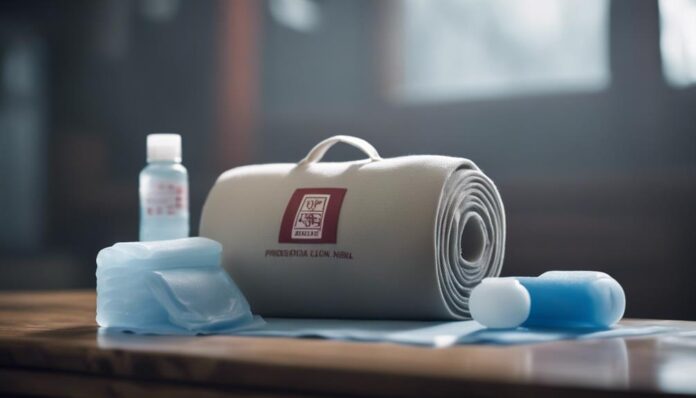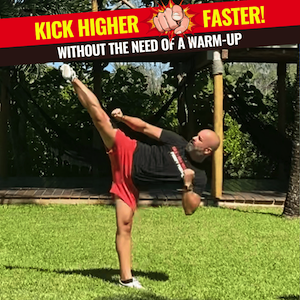As you age, your flexibility declines, affecting your martial arts performance. To maintain peak flexibility after 40, you'll need to adapt your training by incorporating age-specific stretching techniques, such as dynamic stretching and PNF. Focus on exercises that target your hips, shoulders, and knees, like the wide horse stance, and prioritize muscle relaxation during stretching to prevent injuries. Consistency is key, so make daily flexibility routines a habit. By doing so, you'll combat natural declines in flexibility and enhance your martial arts performance. As you refine your approach, you'll discover the specific strategies that work best for you.
Adapting Techniques to Age-Related Changes
With the onset of age-related physical changes, adapting your martial arts techniques becomes essential to maintaining flexibility and performance. As you age, you'll likely experience decreased flexibility, which necessitates the incorporation of age-specific stretching techniques into your training. To maintain your range of motion, focus on gradual improvement and consistent practice.
You'll want to shift from static stretches to dynamic stretching and PNF (Proprioceptive Neuromuscular Facilitation), as these methods promote better flexibility and muscle engagement while reducing the risk of injury.
It's vital to prioritize muscle relaxation during stretching to prevent injuries, especially since pushing too hard can lead to ligament damage.
Don't underestimate the importance of consulting with a sports physiotherapist, who can provide personalized guidance on adapting flexibility techniques to accommodate age-related physical changes and enhance your overall martial arts training.
Age-Related Flexibility Exercises for Martial Artists
Your flexibility training as a martial artist over 40 requires a strategic approach to counteract the natural decline in range of motion that comes with age. To improve kick height and overall flexibility, prioritize regular hip stretching exercises like the wide horse stance.
Dynamic stretching techniques, such as PNF, are more effective than static stretches in enhancing flexibility as you age. Incorporate daily flexibility routines focusing on hip, shoulder, and knee stretches to maintain and improve range of motion.
Gradually increase the height of leg support during front leg stretches to greatly improve flexibility over time. Consistency is vital in practicing targeted flexibility exercises, as it combats the natural decrease in flexibility associated with aging and enhances overall martial arts performance.
As a martial artist over 40, it's important to make flexibility training a priority in your physical activity routine. By incorporating age-related flexibility exercises into your training, you can improve your range of motion, maintain flexibility, and continue to perform at a high level in your martial art.
With consistent practice and a strategic approach, you can overcome the challenges of aging and maintain your flexibility.
Injury Prevention and Management Strategies
As the body ages, injury prevention becomes a vital aspect of martial arts training, and employing effective strategies is essential to maintaining a high level of performance. You must prioritize proper warm-up routines, incorporating dynamic stretching and joint rotations to greatly reduce the risk of injuries during training.
Implementing gradual intensity increases in your sessions helps prevent overexertion, allowing your body to adapt and minimizing the likelihood of strains or sprains.
To further support injury prevention, regularly incorporate strength training and core conditioning into your routine, enhancing joint stability and reducing the risk of injury during martial arts movements.
It's also important to listen to your body's signals and allow adequate recovery time, as older adults may require longer rest periods to heal from workouts and prevent injuries.
Additionally, engaging in activities like yoga or Pilates can enhance flexibility and mobility, contributing to better injury prevention strategies.
By combining these methods with a proper diet, you'll be well-equipped to maintain flexibility and prevent injuries, ensuring a long and successful martial arts career.
Effective injury prevention and management strategies are key to peak performance and longevity in martial arts training after 40.
Nutrition and Recovery for Flexibility
Flexibility in martial arts is deeply intertwined with nutrition and recovery, making a well-planned diet and adequate rest essential components of a training regimen. To maintain flexibility, you must fuel your body with the right nutrients, prioritizing omega-3 fatty acids to reduce joint inflammation and promote joint health.
Adequate hydration is also critical for joint lubrication, allowing you to move freely and prevent stiffness during training.
In addition to nutrition, recovery is an important aspect of flexibility maintenance. Prioritize consumption of antioxidant-rich foods, such as fruits and nuts, to combat oxidative stress in your body and facilitate post-training recovery.
Further, focus on bone health by consuming sufficient vitamin D and calcium to maintain sturdy joints, allowing you to perform martial arts techniques effortlessly.
Effective recovery mechanisms are necessary for muscle wellness, greatly contributing to keeping up the martial arts skill in peak shape.
Integrating techniques for active as well as adequate rest may bring faster restoration of fitness capacity between practices.
Effective Stretching Techniques for Martial Arts

Beyond the domain of nutrition and recovery, incorporating effective stretching techniques into your martial arts training is fundamental for maintaining flexibility after 40. As you age, your muscles naturally lose elasticity, making dynamic stretching a critical component of your warm-up routine.
Unlike static stretches, dynamic stretching and Proprioceptive Neuromuscular Facilitation (PNF) will improve your flexibility and range of motion.
Incorporate hip stretching into your routine, focusing on exercises like wide horse stance and side rising kicks with resistance. These exercises will enhance your kick height and overall martial arts performance.
To improve flexibility while minimizing injury risk, gradually increase the height of leg support during front leg stretches. Consistency is key: commit to daily practice of targeted flexibility exercises to see significant improvements in range of motion and performance.
Avoid forceful stretching and prioritize muscle relaxation during stretching routines to prevent injuries and guarantee gradual flexibility gains.
Effective stretching techniques, including dynamic stretching and hip stretching, are essential for maintaining flexibility and optimizing performance in martial arts after 40.
In Summary
As you execute a perfectly rounded kick, your leg swings in a wide arc, muscles and tendons working in harmony. Coincidentally, your mind flashes back to the countless hours of stretching and conditioning that made this movement possible. You've successfully adapted your techniques to age-related changes, incorporated injury prevention strategies, and fueled your body with the right nutrition. Now, your flexibility is a demonstration of your dedication, allowing you to continue mastering your martial art with precision and power.



